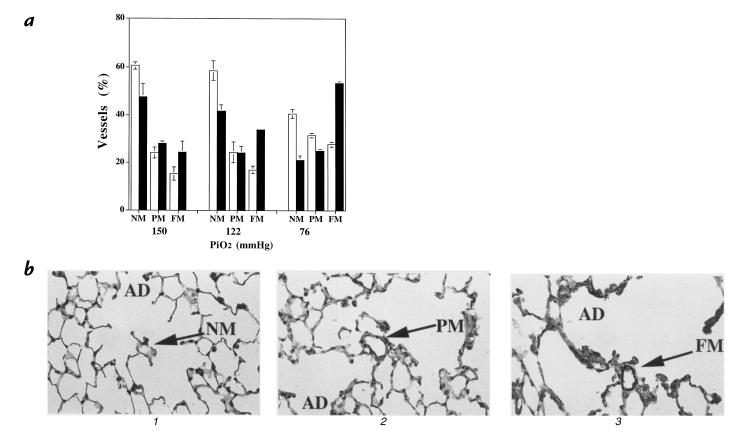Figure 4.
(a) Distribution of nonmuscular, partially muscular, and fully muscularized small arterioles (mean ± SEM) in wild-type (open bars) and eNOS–/– (closed bars) mice at differing levels of hypoxia, demonstrating that with decreasing PiO2 there is a twofold increase in the percentage of fully muscularized (FM) small vessels in eNOS–/– vs. wild-type mice (P = 0.012). Additionally, there is a greater decrease in the nonmuscular (NM) arteries in eNOS–/– mice compared with wild-type with decreasing PiO2 (P = 0.018). There is a trend for increased partially muscularized (PM) arterioles in eNOS–/– mice compared with wild-type with decreasing PiO2 (P = 0.11). (P < 0.05 significant by Kruskal-Wallis ANOVA). (b) Photomicrographs (×40) of myosin-stained lung sections of (1) wild-type lung in normoxia demonstrating a nonmuscular vessel, (2) wild-type lung after severe hypoxia with a partially muscularized vessel, and (3) eNOS–/– lung after severe hypoxia with a fully muscularized vessel. AD, alveolar ducts.

